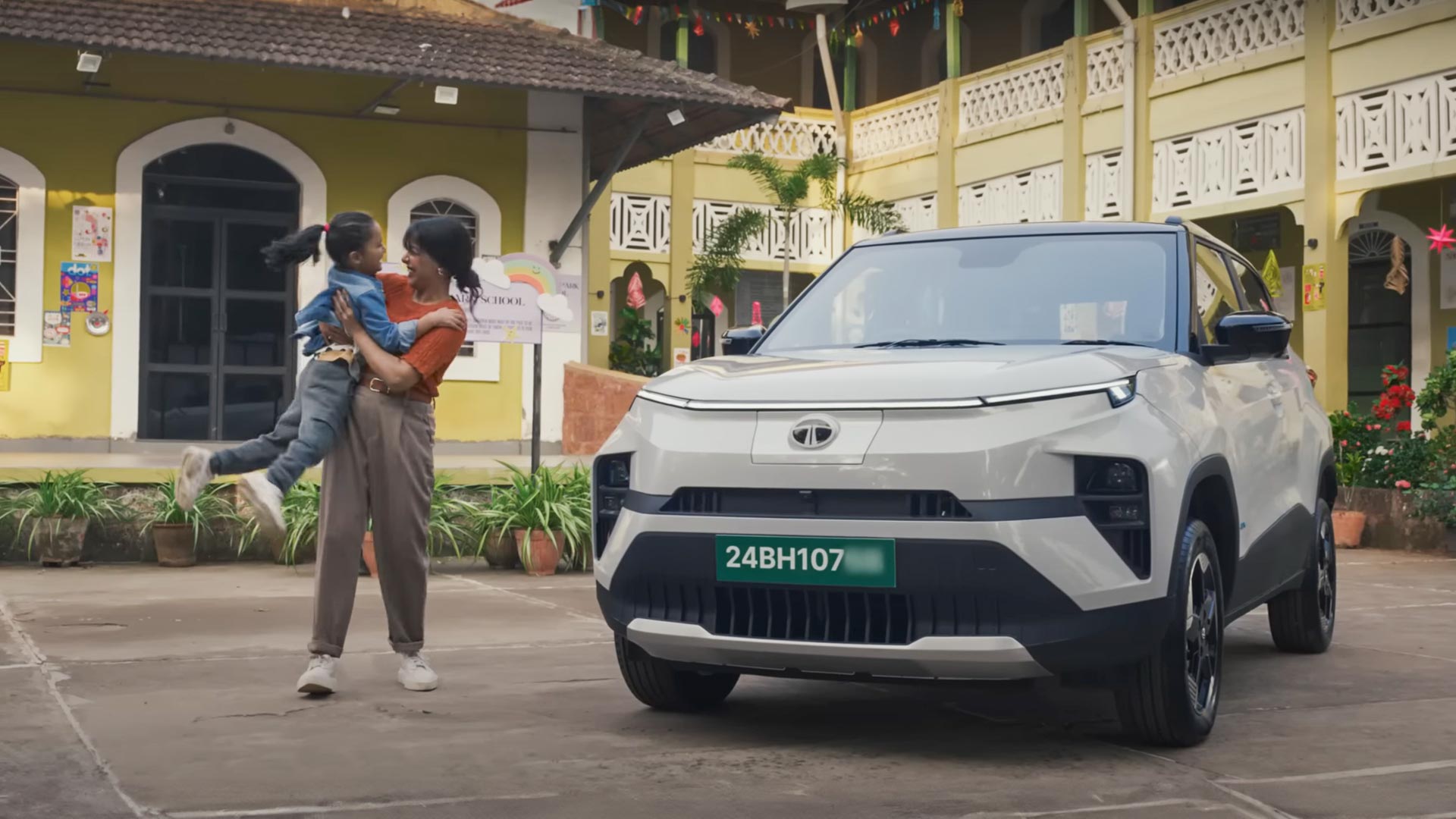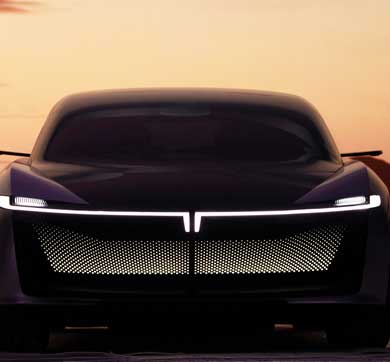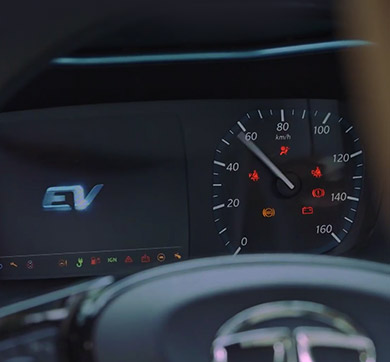February 2024 | 1455 words | 6-minute read
In a major step towards providing a differentiated and meaningful customer experience, Tata Passenger Electric Mobility (TPEM), a subsidiary of Tata Motors, launched its new brand identity — TATA.ev — for its burgeoning EV business.
Unveiled in August 2023, the new brand philosophy of ‘Move with Meaning’ is built on three pillars — sustainability, community and technology.
The business imperative
Spurred on by rising consumer demand, the proliferation of green grids and charging infrastructure, TPEM believes that the Indian EV market is poised for significant growth. With three models currently on offer — Nexon.ev, Tigor.ev and Tiago.ev — TPEM already commands over 71% of the market share in the four-wheeler EV segment. While the company sold over one lakh EVs in nearly four years, it is now well on its way to an annual volume of one lakh. EV sales currently account for 14% of Tata Motors’ total sales in the passenger vehicle segment and the company expects it to increase to 20% in the next three years and at least 50% by 2030. Plans include launching 10 EVs by FY26.
With the growing business came a need to address the EV customer’s unique needs and build a new consumer-facing identity. “It took us a couple of years to realise that EV consumers are dramatically different — not only in mindset, but also in the kind of customer experience they seek — with a discerning attitude and a desire for cutting-edge technology,” says Vivek Srivatsa, Chief Commercial Officer, Tata Passenger Electric Mobility, an entity that was carved out of Tata Motors in December 2022 to cater to all things EV. “We have a very ambitious growth plan for the EV division, and it won’t happen if we don’t reinvent ourselves and premiumise to power our growth. We are entering a new era with TATA.ev.”
Driving a movement
Since the launch of Tata Motors’ first mainstream, consumer-oriented EV — Nexon EV — in January 2020, there appeared a clear demarcation between those preferring EVs and those purchasing internal combustion engine (ICE) vehicles. Adopters of EVs are willing to pay a higher premium (the Nexon EV, for instance, costs ~25% more than its base ICE counterpart) as they are “very conscious about the cost of driving, and sensitive to how the planet is evolving,” says Mr Srivatsa. “For many people, purchasing an EV is the first step towards a sustainable lifestyle.”
“We also noticed that EV buyers are united by the cause, and prefer to be among like-minded people, calling upon others from the community when in need of help,” adds Mr Srivatsa. “More than 60% of EV customers discuss products and join forums to engage with others on sustainability and socially relevant activities, compared to just 5% of ICE customers.” TPEM used this insight to make community development a core part of its brand building and customer experience strategy. “The brand personality we developed is humane, honest, invigorating, and conversational — a rallying point for those curious about having a better impact on the world.”
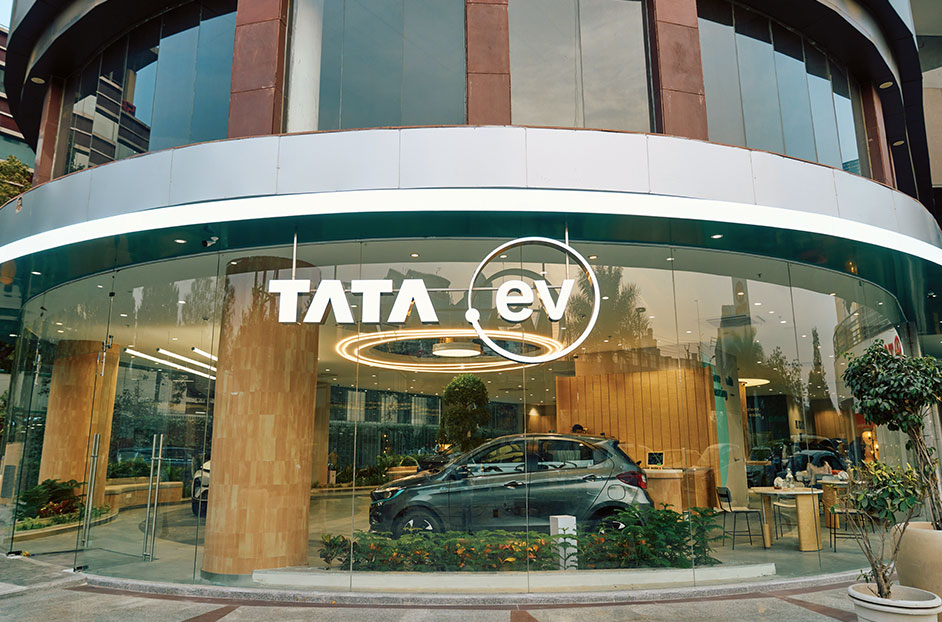
In June 2023, the company launched Evolve, a customer-engagement platform, designed exclusively for its EV owners. Going forward, Evolve will include discussion forums and provide activities like experiential drives, exchange and upgrade programmes, and participation in community-benefiting projects. “Our EV consumers want to do their bit for the environment, but they also want the brand to help them do it,” says Mr Srivatsa. “Through this platform we will help our customers make a difference. As an individual, it is difficult; but if we empower you to do it as part of a group, you can do a whole lot more. These are aspects we will drive as part of our community development.”
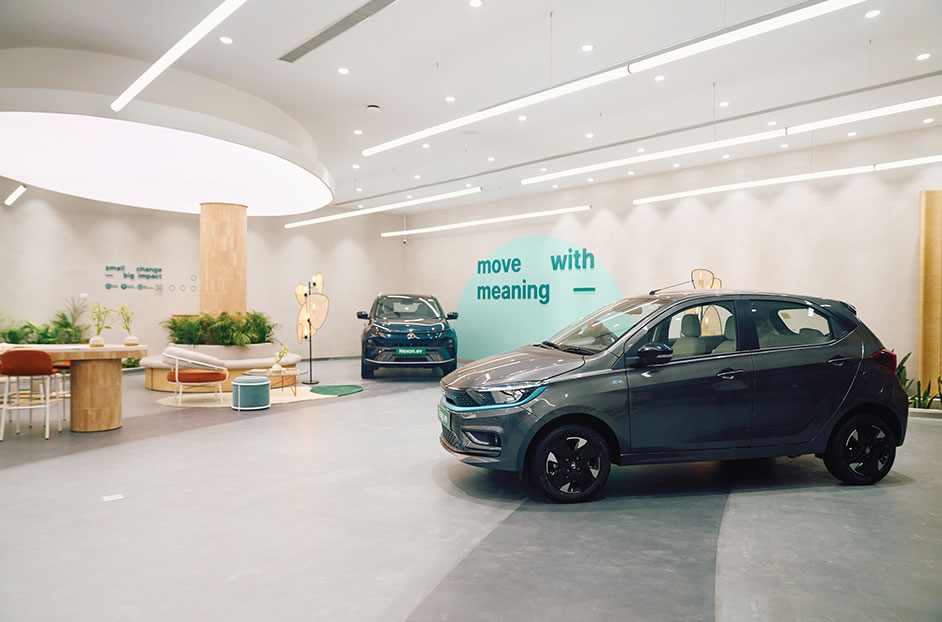
Design thinking
TPEM has formulated a three-step rollout plan for the TATA.ev brand identity.
- Brand design: A new, futuristic brand logo and design identity was developed, keeping sustainability at its core and reflecting TPEM’s focus on premiumisation. The result combines the iconic TATA emblem with ‘.ev’, that is placed in an orbit that symbolises circularity — “from carbon to carbon,” as Mr Srivatsa puts it — or the nature of the ecosystem that nurtures the interaction between humanity and the environment. The Tiago.ev was the first to sport the new logo in 2022, and the Nexon.ev followed in 2023. The brand philosophy has also spilled over to the choice of brand colour — Evo Teal — a fusion of the blue of technology and the green of nature. Sustainable design elements include using an open source Inter typeface that allows for multiple stylistic variations to optimise sustainable printing; a white background on communication to reduce ink usage; and a dark mode approach for all digital collaterals to reduce battery consumption.
- Retail design: TPEM is working on pilots of EV-exclusive stores that are built completely around the new brand experience and design. The stores will provide end-to-end support with product purchase and after-sales service, while also functioning as community centres. The buzz amongst dealers is encouraging. “They know this is going to be the future,” says Mr Srivatsa. “They are very enthusiastic because this is like a new brand with a completely different set of products and customers; it is not an extension of Tata Motors.
- Platform and website: A new website is in the works for both ICE and EV vehicles. The EV e-commerce platform will be live by January 2024 and will cater to the entire gamut of customer requirements — extended test drive requests, bookings, car configurations, finance and more. TPEM is also considering adding functionalities that are more desirable to EV customers, like a time-bound subscription service that operates like car leasing, but with an all-inclusive approach.
Building community centres
Another extension is in the brand’s retail space. So far, TPEM has borrowed space in existing Tata Motors ICE dealerships to showcase its EVs. But the brand rethink has necessitated the creation of a distinct sales network with flagship premium outlets to exclusively showcase the entire range of EV products. Two pilot stores have opened in Gurugram, and there are plans to enhance coverage significantly over the next five years. “We have mapped the customer journey to identify how they explore EVs, and replicated these discovery points on the shop floor itself and calibrated it to address any questions they might have on using an EV,” says Mr Srivatsa. The key focus areas in these new spaces are also centred around community building. “Plans include the creation of a community space to facilitate customer gatherings, sustainability-focused workshops and events, and community service opportunities for customers,” says Mr Srivatsa. “In this way, we are raising awareness of our brand’s pillars and empowering customers. The stores then are no longer just about purchasing a product — post-purchase they become community centres.”
Premiumisation strategy
TPEM’s concept EVs — Curvv EV, Harrier EV, Sierra EV, and Avinya — lined up between 2024 and 2025, highlight the company’s tech-forward, futuristic approach to product development. This is based on insights the company gleaned that EV enthusiasts perceive the vehicle more as a technology product than just a mobility solution — “more as software on wheels, which means more and more software-led features will be incorporated into the cars,” says Mr Srivatsa. “EV owners expect technology to rapidly evolve and are on the lookout for the latest updates and want a differentiated customer experience. So, premiumisation is a core part of our strategy — in product design, product features, communication and retail space. You will have more features in a Nexon EV than in a Nexon ICE. It costs more as well. It is a divergence from where we were, and the brand design and brand guidelines help us transition and deliver this more premium experience to the customer.”
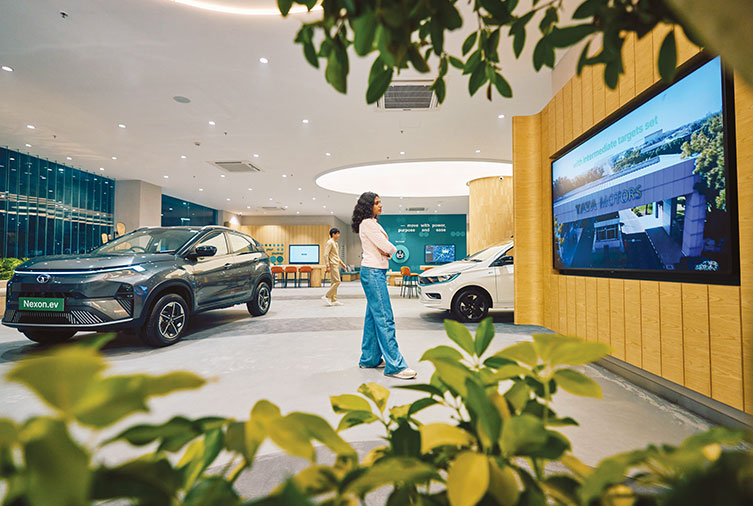
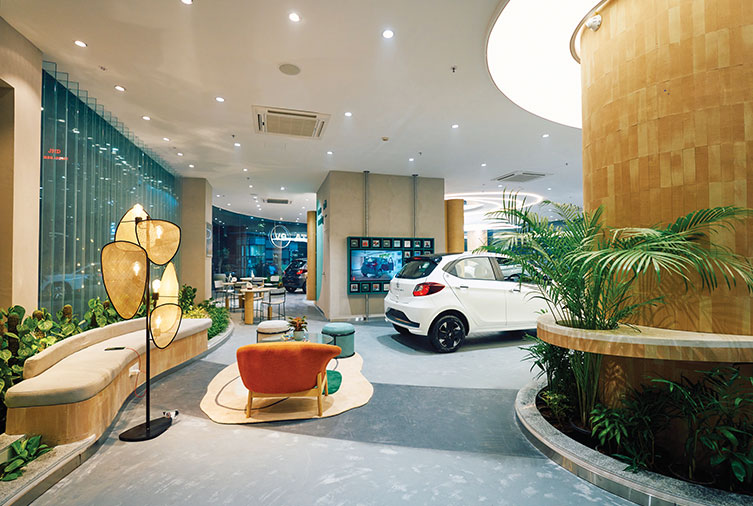

Going to market
The evolution of the global EV market is at different stages in different geographies. Customers, therefore, are aware of the technology that they can anticipate in their homes or market, if they wait. These potential customers naturally have a lot of questions about future products. The marketing approach for the new brand is, therefore, more digital to establish two-way communication channels to enhance engagement. TPEM considers social media, influencer marketing, industry forums and an enhanced dependence on the brand website and the Evolve platform better options to generate leads than traditional offline avenues.
Staying ahead
The creation of a new brand identity is TPEM’s latest step in its strategy to accelerate the adoption of clean energy mobility solutions. With its constantly evolving product portfolio and strong consumer-facing initiatives, TPEM has created a powerful e-mobility ecosystem to strengthen its market leader position and power the EV revolution it kickstarted in the country.
—Sumana Guha Ray




